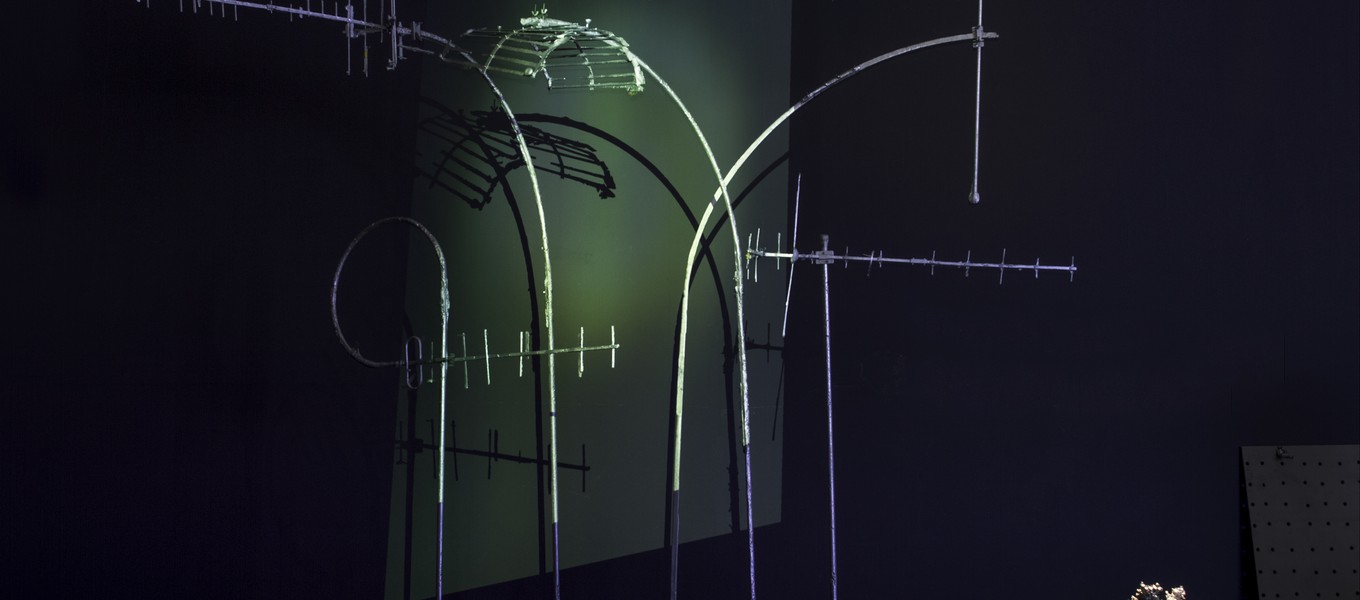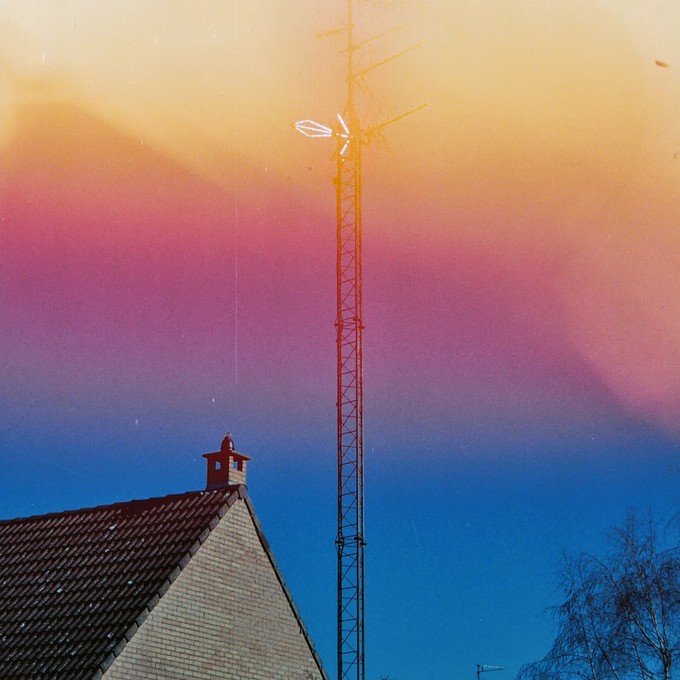Vincent Pouydesseau
Werviqaceae / Antenne botanique - Installation - 2019
presented as part of the exhibition Panorama 21



Installation
Werviqaceae highlights the communication technologies that are transforming our landscape. Now wi-fi and 4G are monopolising the electro-magnetic waves, and TV aerials are gradually disappearing from the tops of our houses as they are replaced by large relay towers.
Landscape is linked to its technological and industrial evolution, the aesthetic dangers of which are endlessly being emphasised today. The strength of this warning is so great that feelings of nostalgia sometimes mingle with the purely contemplative appearances of horizons.
Werviqaceae is a sculpture installation that interacts with electromagnetic fields, which are themselves disrupted by the presence of the public. The work’s power lies in the repeated reproduction of an object—here a TV aerial—although there is no formal multiplication. The installation presents a study of an object and the aluminium it is made from, between archaeological artefact and botanical classification. The artist collects TV aerials in order to melt them down and retrieve their aluminium. He carefully preserves their forms, which are moulded in sand into which he pours this metal in fusion. The object thus becomes material and then becomes an object again.
Fragments of aerials from the foundry are arranged on a table, in a hierarchical structure determined by the branches. These skeletons with their almost organic forms are improved by a programme that enables them both to receive an electromagnetic signal and to emit. This double opportunity permits communication between the aerials. Viewers generate electrical variations that appear in the form of mixtures of colours.
Vincent Pouydesseau
Vincent Pouydesseau is an artist who is fascinated by the textures of objects and their materials. His wide-ranging oeuvre embraces photographic, sculptural, digital and sound compositions.
Having trained in new technologies, he seeks to explore them through different practices, notably by combining, in the manner of a hacker, a deconstruction phase with a different, sensory reconstruction.
His practice can be summarised as the desire to maintain a relationship based on material and immaterial communication between the public and objects in which we no longer take an interest.
